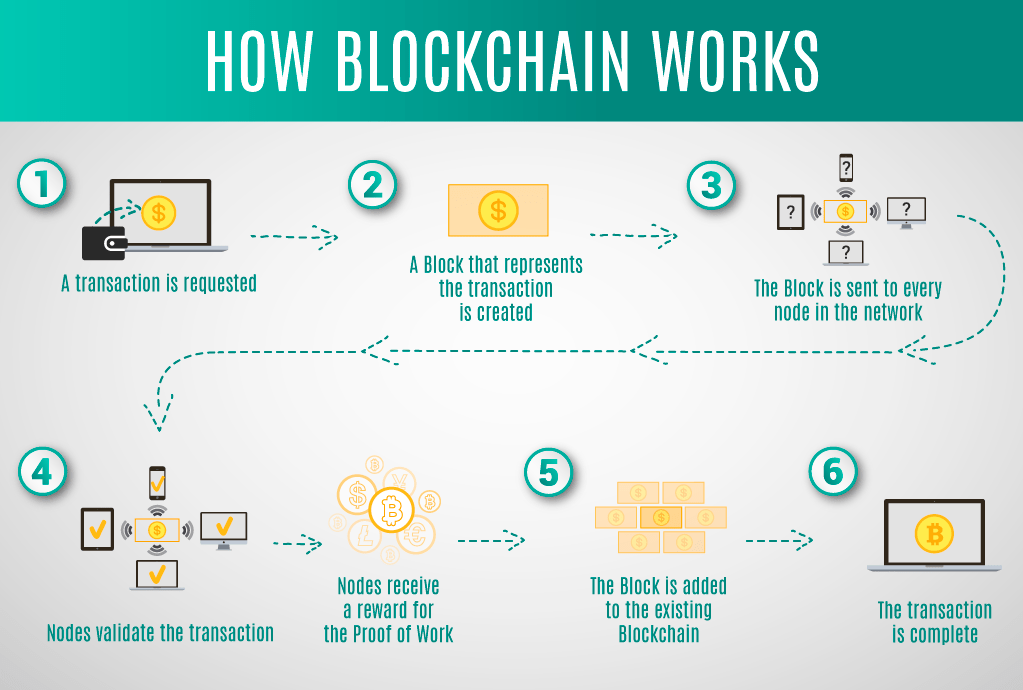The Details that Mining Bitcoin and Other Cryptocurrency has on the Environment of The Planet
It seems like bitcoin and other cryptocurrencies are always in the news. Experts are still trying to explain the meteoric rise of the mockingly created Dogecoin in the stock market, while most other cryptocurrencies also thrive. When Elon Musk tweeted back in May that he was not accepting any transactions in bitcoins, the concerns of environmentalists surrounding cryptocurrency rose more sharply into public focus.
As a consequence, there is a huge environmental debate going on surrounding cryptocurrency. Cautionists and environmental activists decry the massive amounts of energy that locking each bitcoin transaction requires. The supporters refute those as exaggerated claims and even herald bitcoin as the most environmentally friendly.
In order to get to the root of the problem, we need to understand what securing a bitcoin transaction means. Well, it involves blockchains.
How do Blockchains Work?
Blockchain technology rose from the need to timestamp digital files so they couldn’t be backdated or changed. The first application of blockchain came from Satoshi Nakomoto in 2008 when he invented the world’s first cryptocurrency, Bitcoin.
The above diagram by a software company’s blog explains really well both how blockchain works and its connection to cryptocurrency.
Ordinarily, when we create a digital file and save it, all the data is stored in a single location at one node on whatever internet network we’re using. Typically, our device or cloud storage is that node. The blockchain difference is that data is shared transparently over the network. Each node in the network gets an updated copy of the whole network, with files stored in the exact order with which they were added. Each file created is a block, while the chain aspect helps maintain its unique time and location.
A majority of the nodes in the network have to approve of the block’s creation (i.e., of adding the new file to the network). This minimizes chances of fraud. Similarly, since each new transaction or document (represented by a file) is linked in the chain, it is very difficult to distribute an unauthorized copy.
This technology can be applied to all kinds of transactions and outputs out there, including both physical money and cryptocurrency exchanges. In a bitcoin blockchain, each transaction will contain information about the amount of coins exchanged and details of the sender and receiver.
Special nodes on the network called miners have the job of validating the creation of new bitcoins. The encryption techniques are convoluted, requiring a complex set of algorithms to be solved in order to create a fresh transaction (a new block in the chain). The networks are designed to assign a fixed number of bitcoins to the miners per every new block added.
Energizing the Bit in Bitcoin
The energy consumption in bitcoin mining lies in the “algorithm solving” part of the process.
The chainlink needed to lock every fresh block created into the chain is a 64-digit hexadecimal solution to the complex algorithms called a hash. The system generates these numerical puzzles and miners compete, devoting IT resources to solving the puzzles.
Cryptocurrency’s gain in popularity has increased the competition among the mining companies in a race to create more coins for the market.
The mining demand is to speed up their hashrate, i.e. the number of hashes produced per second, without which new coins will not generate. Miners achieve this by setting up warehouses rigged with advanced computers working round the clock to maintain a good hashrate, eating up energy.
Now, the metric for energy consumption is called terawatt hour (TWh) where 1 unit equals 1 trillion watts consumed in one hour. Thus if the TWh of a process or geographical location is, say, 2.5 TWh, that’s 2.5 trillion watts of electricity consumed in one hour.
Using the University of Cambridge’s Bitcoin Electricity Consumption Index, the website Visual Capitalist has created an image comparing bitcoin’s hourly consumption with other major companies, cities and countries in the world. Turns out that mining cryptocurrency coins eats up greater hourly wattage than many countries of the world and is greater by a lot more than the hourly consumption of a major global company such as Google (1,708% to be precise). If cryptocurrency mining was a country, it would rank 29th in terms of its hourly energy consumption. This is a sobering statistic.
The Environmental Imprint of Cryptocurrency
Imagine cryptocurrencies becoming as popular and ubiquitous as the internet or social media. That is, after all, the whole point of it. Where’d we be at in terms of the utility’s environmental footprint on the planet? Actually, the implications of that question change when we consider two important caveats that get ignored in today’s hasty, sweeping generalizations era: Energy consumption ≠ carbon emissions.
That’s true. The debate of environmental impact rests on carbon emissions generated by an industry, rather than its total energy consumption. Renewable, green energy sources are carbon-neutral and do not contribute to the climate and ozone woes of our planet. At this point, there is no way of estimating the real environmental imprint (i.e., the rate of carbon emissions) for bitcoin mining as miners are spread all over the world. Researched estimates of the extent of coal energy usage in mining vary widely, ranging between 39% to 73% in the last 2 years alone.
The second caveat is that mining is the only energy-heavy aspect of the whole hoopla. Once bitcoins are created and sold, future transactions using those bitcoins are similar to any other online monetary transaction. Thus, extrapolating from the current consumption and crypto-transaction numbers to get estimates for more widespread, future usage is ridiculous. As bitcoins go around in the market, there will naturally be a multitude of exchanges involving every single bitcoin mined.
It’s like adding the energy imprint every time I pay money for a purchase. While forgetting that coal energy was used only when printing that money, but not when buying things with it in the market.
Is Context Worth Adding to the Crypto Debate?
Let’s forget those caveats for now.
How do we judge if the energy consumption of an industry or utility is justifiable or not? The proportion of fossil fuels dependency of the world, relative to the switch to green and renewable sources is still unsatisfactory. Many industries and companies still need to take substantial measures to reduce those ratios. And yet, we feel no shame in putting the car into ignition and consuming products without wondering about the CO2 emissions from the manufacturer.
The emotional tinge of the debate surrounding bitcoin’s impact comes from the varying valuations of it as an acceptable or worthwhile utility. If you are suspicious, indifferent or not yet sold to the completely electronic nature of this currency, you will likely attach little or no value. The energy consumption of the industry then, regardless of the actual emissions rate, will be ridiculous and unnecessary to you. On the other hand, if you are among those tens of millions of people who have switched to crypto for various reasons and see it taking over the financial world in due time, you may not mind the consumption needs much especially with caveats cited.
Proponents of cryptocurrency have used another angle to alleviate the anxiety surrounding the environmental debate. Compared to bitcoin, what is the negative environmental imprint of traditional, fiat currency?
At CoinDesk, Peter St. Ogne went to great lengths to estimate the energy consumption of fiat currency on a good day as well as on a bad day. For bad days, he estimated how much TWh was sent up in smoke when the markets suffered a global crash during 2008. He multiplied the carbon cost of a dollar at 1.5kWh (according to the US Energy Information Administration) by 11 trillion, the total loss to the country in 2008 according to the Federal Reserve Bank. The answer is a staggering 16,500 TWh. With the current annual energy usage of bitcoin at 86 TWh (which is inclusive of carbon-neutral sources, unlike the fiat wastage estimate above), it would take at least 500 years at the annual rate to approach what was laid to waste during our last economic crash. The comparison could get even more ridiculous if global losses are translated into its carbon-energy cost, a figure that is likely triple that for the US.
Eureka Road, not Fury Road for Crypto
The good news is that there is room for crypto to get past its negative contingencies.
Already, many mining companies get around the consumption angle by choosing locations where traditional or alternative energy resources get wasted as there is no other use for them. For instance, several cities in China create tons of hydro energy in the wet season that is totally wasted as supply becomes manifold greater than demand. Fifty percent of the world’s total cryptocurrency mining burden is fueled by these resources during the wet season, sliding down to 10% usage when it’s dry.
Similarly, miners are flocking to oil extraction sites around the world to utilize the wasted natural gas released in the extraction process. Used or wasted, the gas release is adding to the environmental imprint regardless. From North Dakota to Siberia, these companies are now striving to develop better controlled ways to use this gas to reduce the CO2 emissions released in the process.
A superior solution is represented by the Crypto Climate Accord. Companies signing on to the accord pledge to achieve zero-emissions energy usage. The accord aims to achieve 100% carbon-neutrality in its industry by 2023 and is working toward the development of tools and standards to help achieve this target.
Another road is to focus on developing mining strategies that are less energy-intensive. Current strategies that researchers around the world are focusing on include increasing the computing efficiency for the algorithms and reuse of the large amount of server heat released. It has been suggested that reducing the electric usage of the mining process itself is inversely proportional to the inherent security of the process. Changing the process to make it less energy-intensive opens the process to fraudsters, removing the fairness quality of the current mining system.
But there are many silver linings. While the mining strategy of validating block-additions, called Proof of Work, is energy intensive, Proof of Stakes allows transactions to validate based on the amount of bitcoins already in possession by the proof-provider. While Ethereum, a cryptocoin which has switched to PoS, will reduce consumption by 99%. Developers are still racing to make the security features foolproof. Many other potential solutions lie in adding a Layer 2, security measures on top of the blockchain layer which reduce its PoW mining requirements.
At the same time, researchers are also grappling with larger questions. How sustainable will a truly smart city be which runs almost entirely on cryptocurrency and other applications using blockchains? Most green solutions are currently very expensive and not available at the large scales that cryptocurrency already needs. This line of research suggests that due to its usefulness, cryptocurrency and blockchain technologies at large cannot be entirely abandoned. Instead, the focus should remain on cheapening and availing sustainable resources to fuel our future.
The Last Bit about Bitcoin
Compared to the carbon-imprint of fiat currency, cryptocurrency is a cat’s meow in face of a lion’s roar.
It is healthy and requisite that, given the world’s climate and planetary health challenges, the cryptocurrency industry is already green-conscious. Even where sustainable energy is not being tapped, the focus is on using alternate sources that are adding to the carbon-imprint even as waste.
The Crypto Climate Accord, on the other hand, is making sure that companies are tracking and improving their energy consumption and its sustainable resources ratio.
As with any real world issue, the solution to the energy problems lies not in hyping up or down this or that product but sincerely uprooting fossil fuels from all of human industry as fast as possible. Cryptocurrency is the way to the future and green solutions are under development.
Keep up the conversation but do your research.






